The first decades of the twentieth century were not the best moment in history to devote your life to sports and make a living from it, unless you were a member of the upper classes or had an exceptional talent with a soccer ball. It was even harder for a black man born in a British Empire territory. Thus, it was not very likely that a black man born in Jamaica got to be a world wrestling champion, to travel throughout Europe as a wrestler and boxer, to settle down in Spain become and sporting pioneer in the country, and finally to became the local guard fitness trainer. And of course, there should not be too many Jamaicans fighting fascism and collaborating with the Republican side in Madrid during the civil war. But all this was what happened to the protagonist of this article, Frank Crozier.
Born in Jamaica in 1882, as a young man he went to work in the shipyards as a mechanical worker in the machinery department. At the beginning of the 20th century he moved to Scotland and became a physical culture adept and gym goer. He started to participate in wrestling contest, and after a few victories, he became champion of Scotland in 1906. He kept fighting throughout the region, but ultimately he moved to London, where he entered the prestigious wrestling championship organized at the Alhambra in 1909 and becoming wrestling middleweight champion of the world.
The following year, 1910, he could not repeat the feat, and lost in the semi-finals to the Indian champion Butan Singh. Despite his defeat, he was still a prestigious fighter, and he also began frequenting the boxing milieu. He helped with the physical preparation of some boxers, and in 1911 he crossed the English Channel to become a wrestler and boxer globetrotter. He first boxed in Paris and lost to another former wrestler. Then, he toured Spain with a troupe of boxers to introduce boxing to the Spanish public. In Madrid his boxing exhibitions where banned, while in Barcelona they were welcomed with champagne. His team was so successful, that he was offered the opportunity to open his own gym, the Spanish Athletic Club. Shortly after, however, he could be found boxing in Berlin in 1912 and wrestling in Paris and Madrid in 1913. He was an international professional athlete with a precarious life, chasing opportunities across Europe.
- FIGURE 1 – Crozier in Madrid 1911
Probably, this hazardous life made him look for some stability, and Madrid, the same city where he was once banned, offered him the opportunity to settle down. In November 1913 he opened, probably with some financial aid, his new gym, the Anglo-Spanish Academy of Physical Culture and Boxing. From then own he lived in Spain, since according to his own worlds, he had fallen in love with the country and with a Spanish woman who became his wife.
He became a regular of the incipient boxing scene being born in Barcelona, and in 1916 his great opportunity came: the former heavyweight champion Jack Johnson arrived in Spain fleeing racial persecution in the US and the First World War in Europe. He spent more than a year in the country, giving somewhat bizarre exhibitions inside and outside the ring. For his debut, Johnson needed a boxer experienced enough to give an acceptable show, and in Madrid only Crozier could do the job. The Johnson vs Crozier match was announced with great fanfare and the show was sold out. However, the match ended in KO after Crozier was sent several times to the ground, and the public was so dissatisfied by Crozier’s limited performance that Johnson had to offer them a few rounds of exhibition with his nephew, also a boxer named Gus Rhodes. Crozier was then 34 years old, and although he had been an excellent wrestler, he was never more than a mediocre boxer, art in which he probably introduced himself simply to bring food to the table.
- FIGURE 2 – Crozier’s Academy 1913
However, he kept boxing and wrestling for some more years. The latest news is a wrestling challenge between him and the Spanish wrestler nicknamed Kaamalof, in 1920. After that, he travelled to the Spanish eastern city of Alicante to give a lecture, participated there in an exhibition and apparently decided to move there, since the following year we found Crozier ads in the local press as a massage therapist.
From then on, we found him giving massages and working as coach for regatta club in Alicante, for the Madrid athletic team two years later, and in 1925 he reopened a gym in Madrid. At that point, he considered himself as a retired boxer in press interviews. In 1926 he is working as a coach for Racing football club, precisely when football is quickly professionalizing. And that same year he was renowned enough to be hired by the mayor of Madrid to put in shape the needy urban guard. Unfortunately, he was never paid for those services, and spent years of trials trying to collect them. It is clear that it was not easy to make a living from athletic knowledge in those years, and Crozier had to work simultaneously in several clubs and doing different things – training, massage or giving boxing lessons – just to make ends meet.
- FIGURE 3 – Crozier training Madrid’s police 1926
The last news of Crozier that I have been able to find is dated in 1937. The Spanish Republic defends itself against a fascist coup d’état and Madrid is under siege. Crozier works as a volunteer at the hospital for the wounded, giving the massages that, according to him, have earned him bread for thirty years in Spain. He says he does it for love of a country that welcomed him and of which he feels part. He probably could have left Spain with his British Empire passport, but decided to stay.
- FIGURE 4 – Crozier at the hospital 1937
I have not been able to determine what happened to him after 1937. Did he die in any of the bombings over the city or in the ensuing repression? Did he run away from Spain during or after the war? Did he stay in Madrid after the war living an anonymous life away from sports? It is a last mystery of an extraordinary life that I would certainly like to clear.
Article © Carlos Garcia

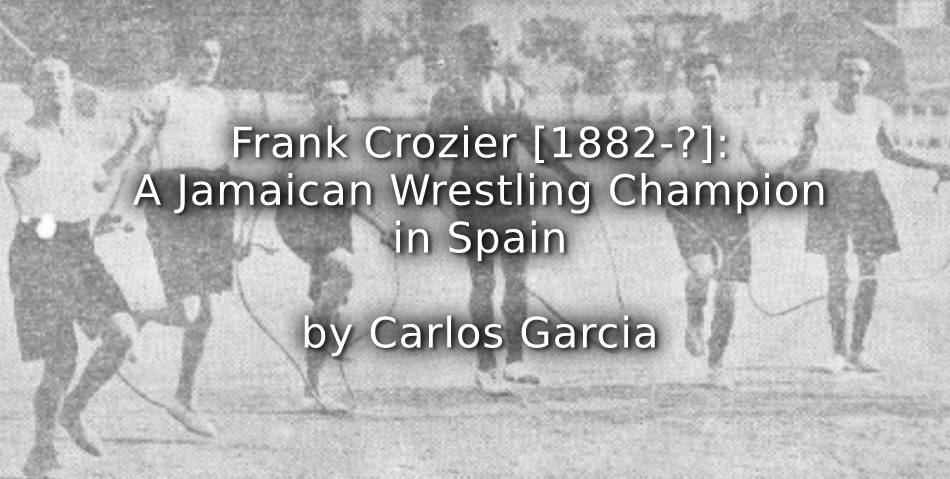

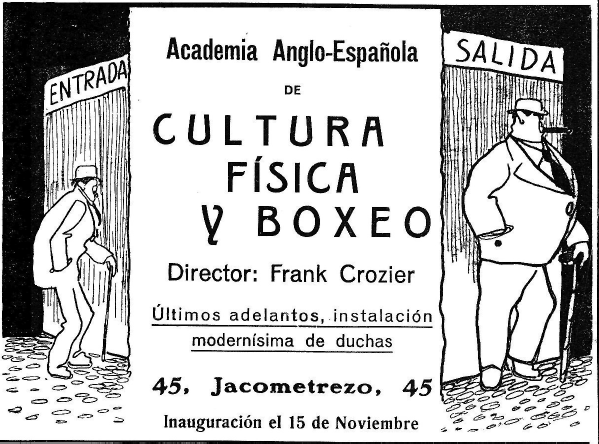
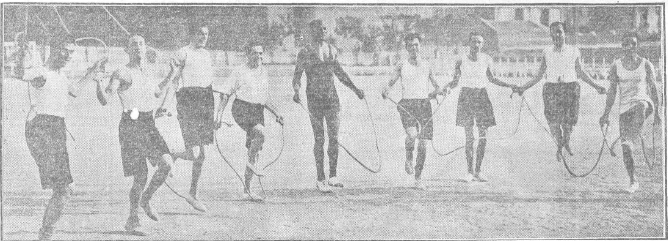
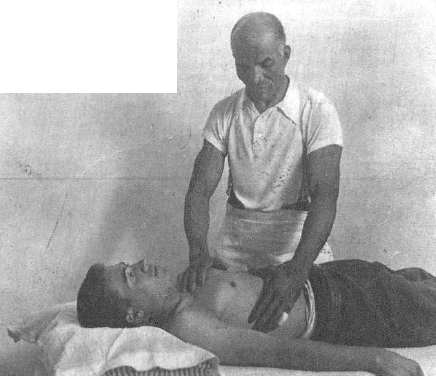
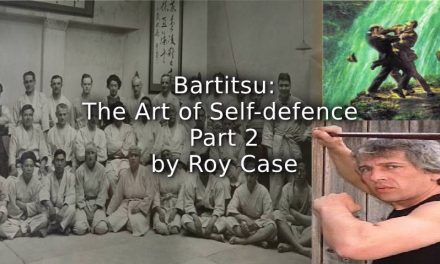
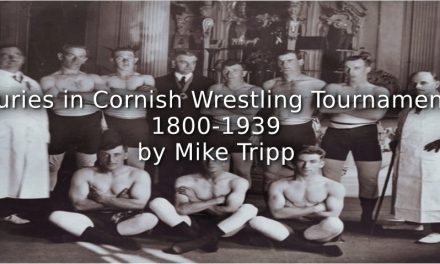
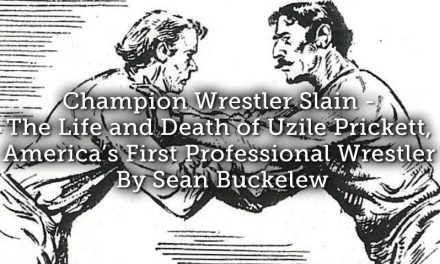
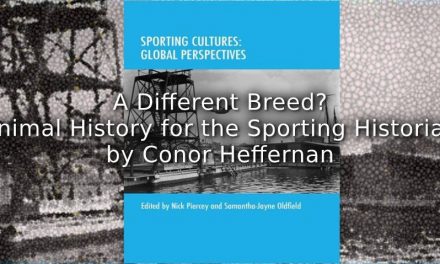
Thanks Carlos,
The careers of professional sports participants have very often been precarious, successful for a while in one location, and then having to move on to find work, sometimes across borders. You have carefully researched a fine example here.